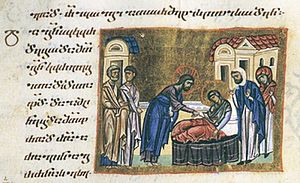 Not long after addressing that “curious criterion” of biblical studies that holds that the less likely something seems to be in the Gospels, the more likely it is to have been historically true, I unpacked a carton of my books that included The Resurrection of Jesus: John Dominic Crossan and N. T. Wright in Dialogue, and found in there a classic example of that curious criterion in action.
Not long after addressing that “curious criterion” of biblical studies that holds that the less likely something seems to be in the Gospels, the more likely it is to have been historically true, I unpacked a carton of my books that included The Resurrection of Jesus: John Dominic Crossan and N. T. Wright in Dialogue, and found in there a classic example of that curious criterion in action.
Actually it is a slight oversimplification to describe this criterion the way I did in my opening line. More “strictly”, it is summed up by the incredulous claim: “I can’t see why anyone would make it up.” Surely claiming authenticity for any data on the grounds that one “can’t think of a reason it would have been made up by anyone” is the nadir of intellectual laziness. When taken to its extreme, it can be used to prove the most sensational claims of the miraculous. And that is exactly where Bishop and Scholar N. T. Wright does take it. He is referring to the Gospel of Luke’s account of the resurrected Jesus appearing to his disciples and breaking bread and eating bread and fish with them:
If you have an empty tomb and something’s happened to the body, and then if the apparitions are not just apparitions, such as you have when somebody you love has just died, but actually involve some extraordinary physical things. You know, according to Luke 24, there must be a broken loaf lying on the table somewhere which they didn’t break — somebody did that — and so it’s not just eating broiled fish. There’s a bunch of physical phenomena going on, and this is where the stories are so odd, as well as these kind of paraphysical phenomena — I don’t think anyone could have made up these stories, actually, I think they’re so bizarre — and that’s part of the point. . . . (pp. 37-8, my emphasis)
Historians (not theologians) generally treat bizarreness as an indicator of fiction, and the more bizarre the more likely to be fictitious.
But N. T. Wright is “a leading New Testament scholar” whose work is certainly discussed with all seriousness by other scholars as diverse as (“liberal”) John Dominic Crossan and (“independent”) Maurice Casey. Continue reading “That Curious Criterion Classically Illustrated”
Like this:
Like Loading...






